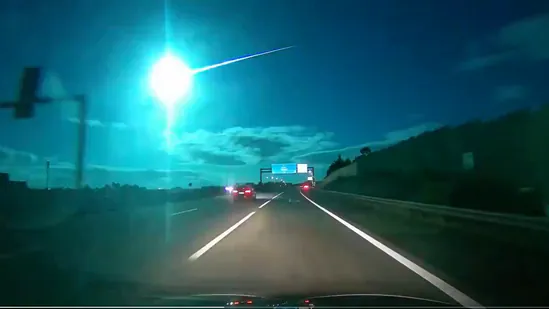The night sky over Spain and Portugal recently became the stage for an extraordinary celestial event. A brilliant ‘blue fireball’ meteor streaked across the heavens, leaving countless people in awe. Social media buzzed with excitement as users shared stunning photos and videos of the event, capturing the fiery spectacle from various angles. Despite the widespread attention, there hasn’t been an official confirmation of the meteor sighting yet.
A Vivid Blue Meteor Across the Sky
In every video shared, one thing stands out—the vibrant blue color of the meteor. This striking hue illuminated the night for a few brief, breathtaking seconds before the fireball vanished from sight. People from all over the region recorded this mesmerizing event, each perspective adding to the collective wonder and amazement.
NASA’s Insights on Meteors
NASA provides some fascinating context about meteors and their frequent visits to our atmosphere. The space agency estimates that around 48.5 tons (44,000 kilograms) of meteoritic material falls to Earth daily. Most of this material burns up in the atmosphere, creating the bright trails we fondly call “shooting stars.” On any given night, you can usually spot several meteors, but there are times when the numbers increase significantly during meteor showers.
Meteor showers are regular celestial events that occur as Earth passes through the trail of dusty debris left behind by comets. These showers are named after the star or constellation near their apparent origin in the sky. For example, the Perseids, one of the most famous meteor showers, peak every August and provide a dazzling display.
The Legendary Lyrids Meteor Shower
Just before this recent sighting, the Lyrids meteor shower made its annual appearance in April. The Lyrids, one of the oldest known meteor showers, have been observed for about 2,700 years. Historical records from China document its observation as far back as 687 BC. The Lyrids are particularly notable for their bright and fast meteors, making them a favorite among stargazers. For the best viewing experience, it’s recommended to watch them in the Northern Hemisphere during the dark hours after moonset and before dawn.
